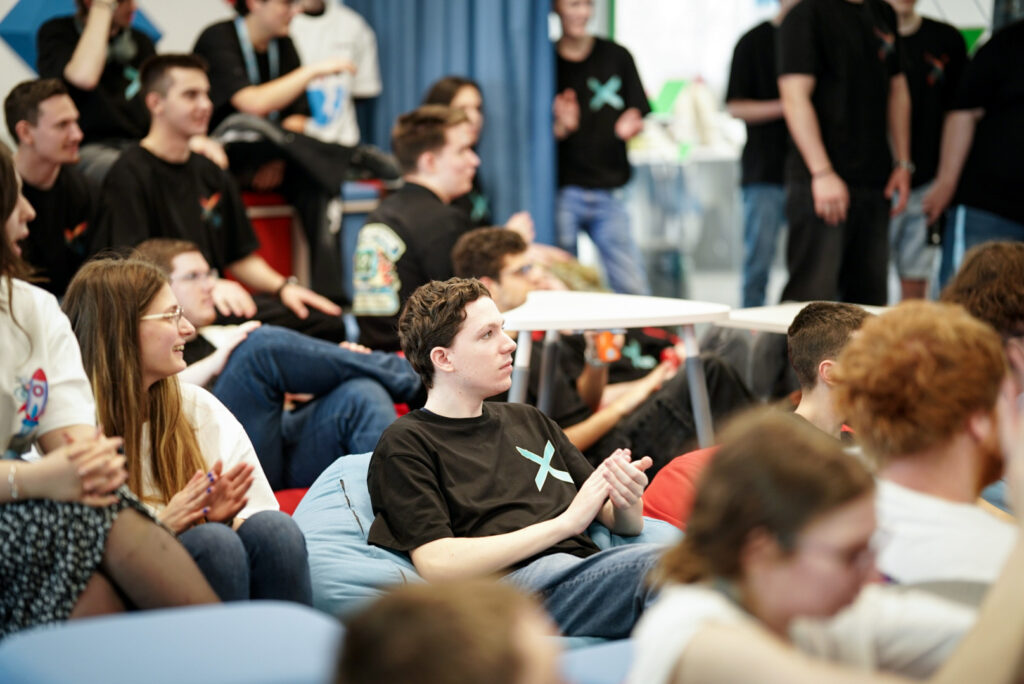
A self-assessment checklist offers a valuable opportunity to reflect on and strategically plan your career. For junior developers entering the world of IT, it’s common to rely solely on feedback from mentors or tech leads. While this approach has its merits—analysing the experience and competencies of seasoned professionals—it can inadvertently absolve beginner developers of personal growth responsibility. In this article, we’ll delve into why and how novice developers should take the initiative to self-assess.
P.S. If you’re short on time, feel free to scroll down for a quick and convenient software developer assessment test to put your knowledge to the test.
Why analyze yourself?
No one is more invested in your personal growth than you. By prioritizing self-reflection before seeking feedback from your manager or mentor, you can accelerate your professional development. However, this approach is effective only if you not only identify gaps in your knowledge but also dedicate time to self-study. While a mentor’s feedback provides evaluation from an experienced professional, self-assessment enables you to consciously recognize your needs and goals. Both approaches complement each other, allowing you to choose a more targeted professional path.
Now, let’s discuss how to go about it.
#1 Identify What Hinders Your Development
To understand your potential and obstacles to development, identify your strengths, weaknesses, opportunities, and threats:
- Strengths: These are hard skills. For instance, proficiency in PHP, Golang, and JavaScript. These languages complement each other well, enabling you to create complex software solutions and tackle diverse tasks.
- Weaknesses. Areas where you need to catch up. For example, lacking knowledge in technologies specified in job requirements.
- Opportunities. Avenues for rapid development. Consider taking additional specialized courses or participating in a developer hackathon.
- Threats. Factors that could impede your career growth. For instance, studying a programming language at university that is rarely used in current projects. Python, C, Java, C++, and JavaScript are commonly ranked high in the TIOBE index.
Write down these points on a sheet of paper: list strengths in the upper left square, weaknesses in the upper right, opportunities in the lower left, and threats in the lower right. This visual aid helps you emphasize competencies to build on and areas needing improvement. Discuss this analysis with your mentor or tech lead, who, drawing from their experience, can guide you on maximizing your potential within the team.
Another method is to assess yourself based on a job description. Review the requirements for the desired position and evaluate your skills for each item:
- Is your English level lower than mentioned in the description?
- How collaborative are you as a team player?
- Do you possess knowledge of all the required frameworks?
These answers will reveal areas for improvement and strengths to leverage.
#2 Find Out What Your Colleagues Think of You
Seek feedback from colleagues or a mentor to help identify gaps in your knowledge. Be open to criticism; such comments are not meant to devalue your expertise but to provide guidance on areas for further learning and practice.
Many companies organize feedback sessions, where each participant gives brief (up to five minutes) feedback to colleagues and the manager, receiving the same in return. If your team doesn’t have this practice, suggest it to your tech leader.
The advantage of this initiative is the regularity of feedback. To consistently improve as a specialist, systematic feedback from experienced colleagues on your progress is essential.
#3 Compare Yourself to Other Newcomers
Ask your colleagues who have recently joined the team about their learning experiences; their insights can be valuable to you.
Additionally, explore the social media profiles of professionals in various IT companies, especially those who are new to the industry. Take note of the educational articles, resources, conferences, and hackathons they engage with. Consider emulating their paths if it aligns with your goals.
Regularly revisit this practice to stay connected to industry trends. This will provide you with a snapshot of a contemporary junior developer, helping you understand your competition, as the competition among newcomers for their first job is typically intense.
#4 Networking
This is essential for staying on the same page with others and being well-informed about the demands of the IT market.
Where to seek networking opportunities? Attend conferences, workshops, and webinars hosted by IT professionals. Take advantage of these occasions to pose questions to the speakers, meet them in person during breaks, and, if the event is online, don’t hesitate to connect with experts through social media. Some speakers often share life hacks, lessons learned from work failures, analyze the usefulness of new tools, and discuss various interesting IT topics.
In our team, the NIX IT MeetUp has already fostered a community of IT enthusiasts. The program is designed to accommodate participants with varying levels of IT experience, providing valuable lectures.
#5 Learn to solve problems in different ways
There’s always a way to do something well—and do it better:
A front-end developer proficient in React.js, Vue.js, and Angular can employ them individually to tackle a task. After obtaining the same result, they can choose the optimal approach for similar tasks in the future.
Creating a webpage with a list of products is possible using JavaScript, Python, or PHP. While understanding each language is advantageous, some will be better suited for this task, offering greater speed or productivity for the system itself.
In the field of Data Science, one can use various approaches to analyze data. Whether employing statistical methods, machine learning, or visualization, different methods help identify trends, dependencies, and other crucial information. Embracing diverse approaches provides deeper insights into the data and yields valuable ideas.
Where can you find inspiration for different solutions?
Try challenges on LeetCode and Codewars. These platforms serve as “online simulators” featuring tasks of varying complexity, suitable for any programming language. They include leaderboards where you can explore the solutions of other participants. Perhaps someone wrote a more concise code while retaining all the necessary functionality. Don’t hesitate to ask them on the forum or in person about their approach and attempt to replicate the same steps.
Transition from individual tasks to complete projects. Experiment with coding a mobile app, such as a to-do list app. Compare your solution with those available on these platforms, showcase your work to colleagues or experienced developer friends, gather feedback, and refine your app. You can also upload your code repository to GitHub for broader visibility—there’s a good chance your work won’t go uncommented.
Crucial tip: Read all opinions attentively. Even critical feedback can lead to new ideas and improved solutions.
#6 Infuse interactivity into your learning experience
Engaging in hackathons offers a unique avenue to explore a new role and benchmark your proficiency against other participants. This format imposes no restrictions in terms of technology or programming languages.
These events are designed to enhance existing skills, fostering logic and analytical thinking. Participants get the chance to showcase their technical prowess and creativity, approaching tasks from unconventional angles. An additional incentive lies in the opportunity to claim the top spot on the leaderboard and potentially win a cash prize.
For university students, aside from hackathons, keep an eye on announcements of competitions on your educational institution’s website. You can also participate in international coding competitions tailored for students. Two notable ones are Imagine Cup and The International Collegiate Programming Contest.
Knowledge Self-Assessment For Junior Developers
In our perspective, these are the primary criteria to self-evaluate. Employers prioritise these aspects, and they are crucial for gauging your requirements in the work process.
In this, self assessment test for junior developers, assign the specified number of points next to each “yes” answer. If your total surpasses 60 points, there’s a strong likelihood of receiving job offers or engaging in more captivating tasks within your current team.
Education:
- Specialized education: Yes/No (7 points)
- Specialized courses: Yes/No (4 points)
- Self-education (canon – 2 hours/day): Yes/No (7 points)
Experience:
- Pet projects: Yes/No (10 points)
- Portfolio (website, GitHub repository with program codes, etc.): Yes/No (7 points)
- Learning from an experienced mentor: Yes/No (5 points)
- Participation in conferences/webinars as an attendee: Yes/No (3 points)
- Participation in hackathons/competitions/open source projects: Yes/No (3 points)
Knowledge:
- Proficiency in several programming languages and tools: Yes/No (10 points)
- Familiarity with all technologies mentioned in the job description: Yes/No (5 points)
- Familiarity with all technologies used in the project: Yes/No (5 points)
- English proficiency at Pre-Intermediate level and above: Yes/No (4 points)
Ability to:
- Seamlessly combine several languages and tools in practice: Yes/No (10 points)
- Solve a problem in multiple alternative ways: Yes/No (10 points)
- Explain a complex concept to mom/grandma: Yes/No (3 points)
- Effectively present the results of your work (or an intermediate stage) to the customer: Yes/No (5 points)
The best practice for any IT professional is to keep learning. Whether you’ve secured that long-awaited offer or have been part of a team for years, continuous learning enhances your skills, ensuring sustained relevance in the field.
Keep in mind: the industry keeps evolving, with new technologies replacing old ones. To excel as a specialist, learn to stay in sync with progress from this moment forward.






